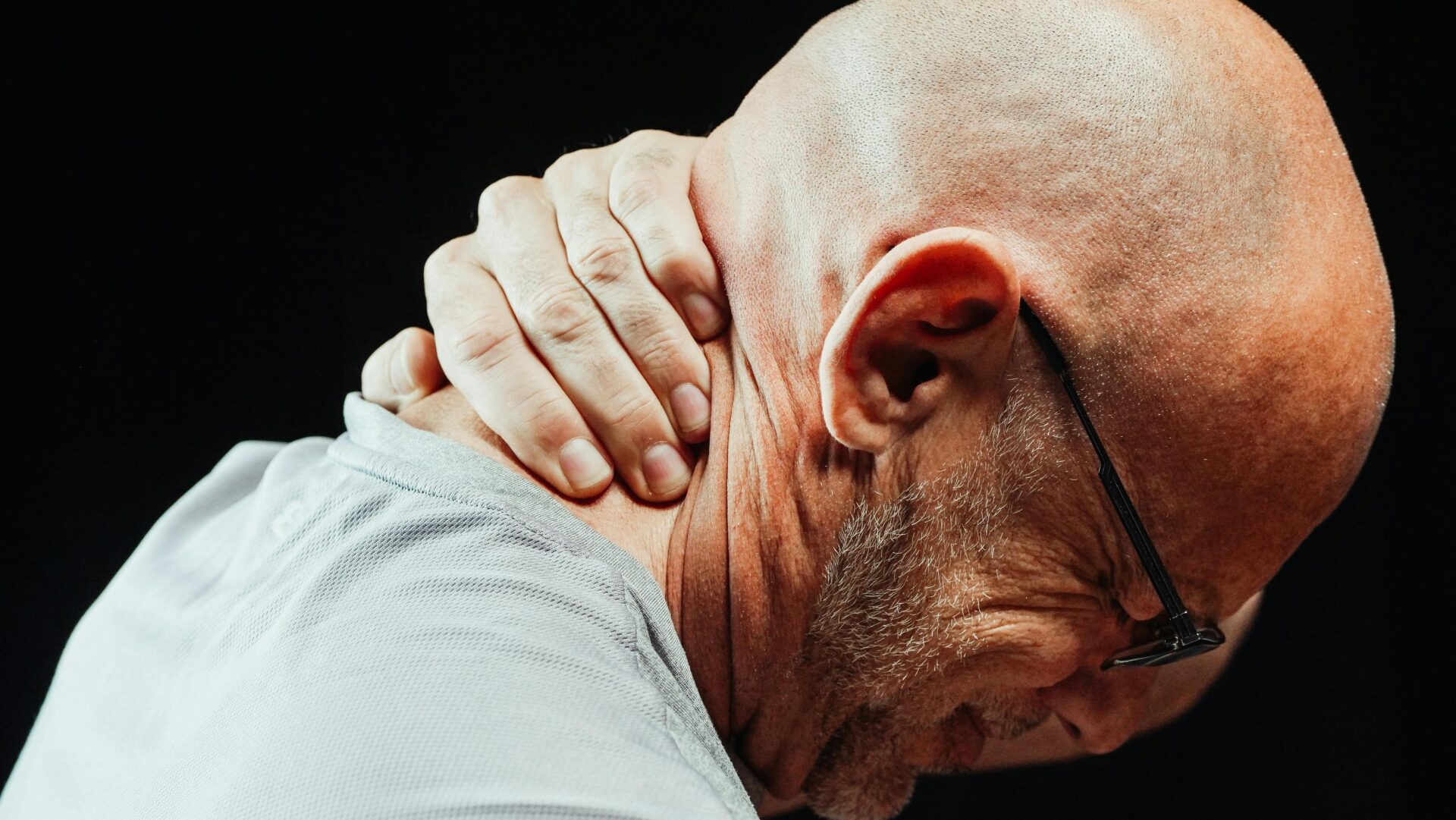How to Relieve Neck Pain Naturally at Home: Stretches, Heat Therapy & Posture Secrets
Contents
- 1 How to Relieve Neck Pain Naturally at Home: Stretches, Heat Therapy & Posture Secrets
- 1.0.0.0.0.1 Read DISCLAIMER
- 1.0.0.0.0.2 The material presented here is for general informational and educational purposes only and is not medical advice. Although we attempt to provide current and accurate information, this blog should not be used as a replacement for professional medical consultation, diagnosis, or treatment. In all cases, consult your physician or an accredited medical practitioner with regards to any medical condition or treatment. Do not ignore professional medical advice or wait for it on the basis of information provided by this blog. In a medical emergency, call emergency services immediately.
- 1.1 Understanding Why Neck Pain Happens
- 1.2 The Role of Stretching in Neck Pain Relief
- 1.3 Posture: The Hidden Culprit Behind Chronic Neck Pain
- 1.4 The Emotional Connection: Stress and Neck Pain
- 1.5 Building Daily Habits for a Healthier Neck
- 1.6 When to Seek Help
- 1.7 Conclusion: Reclaiming Comfort and Freedom
- 1.8 FAQs with Answers
Relieve neck pain at home with simple stretches, heat therapy, and posture tips. Discover natural ways to ease stiffness and prevent future discomfort.
Read DISCLAIMER
The material presented here is for general informational and educational purposes only and is not medical advice. Although we attempt to provide current and accurate information, this blog should not be used as a replacement for professional medical consultation, diagnosis, or treatment. In all cases, consult your physician or an accredited medical practitioner with regards to any medical condition or treatment. Do not ignore professional medical advice or wait for it on the basis of information provided by this blog. In a medical emergency, call emergency services immediately.
Neck pain has a way of sneaking into daily life when you least expect it. It can begin as a dull ache after a long day at your desk, or a sharp stiffness that greets you first thing in the morning. For some people, it lingers like an unwelcome shadow, making even simple movements uncomfortable. Whether it comes from hours of scrolling on your phone, sleeping in the wrong position, or spending too much time slouched at a desk, neck pain is one of the most common modern health complaints. The good news is that most cases can be eased at home with simple yet powerful remedies.
In this blog, we’ll explore how to relieve neck pain through stretching, heat therapy, and posture correction. But beyond that, we’ll dive into the emotional and practical sides of living with neck discomfort, showing you how to create habits that not only treat the pain but also prevent it from coming back.
Understanding Why Neck Pain Happens
Neck pain often starts with tiny habits that add up over time. Imagine holding a small book at arm’s length. At first, it doesn’t feel heavy, but as minutes pass, your arm begins to ache. This is exactly what happens when you keep your head tilted forward, such as when using your phone or working on a laptop. The head, which weighs about as much as a bowling ball, puts extra pressure on the delicate structures of your neck when it’s not aligned with your spine.
Tight muscles, weakened posture, and lack of movement often combine to create discomfort. In some cases, stress and emotional tension amplify the sensation, making the muscles feel even more rigid. Understanding this link between lifestyle, posture, and emotions can help you address neck pain more holistically, rather than just treating it as a physical inconvenience.

The Role of Stretching in Neck Pain Relief
Stretching is one of the simplest and most effective ways to ease stiffness. Think of your muscles like elastic bands—when they stay contracted too long, they lose flexibility and start to ache. Gentle stretches restore their length, increase blood flow, and signal your nervous system to relax.
Gentle Neck Rolls for Mobility
One of the easiest stretches is to slowly roll your head in a semicircle, from one shoulder to the other. The movement should be soft and mindful, as if you are tracing the edge of a rainbow. Doing this helps loosen the joints and allows muscles to glide smoothly, reducing that “locked-up” feeling many people describe.
Side Stretch to Release Tension
Another effective stretch involves tilting your head to one side, bringing your ear closer to your shoulder. You may notice one side of your neck lengthening like a stretched ribbon. Holding this for a few deep breaths gives your muscles a chance to reset, especially if you’ve been sitting for hours.
The Chin Tuck for Posture Correction
Perhaps the most underrated stretch is the chin tuck. Imagine trying to create a double chin without looking down. This simple action realigns your neck with your spine and strengthens the small but powerful stabilizing muscles at the back of your neck. Over time, this stretch can help undo the effects of “tech neck” caused by constant forward head posture.
When practiced daily, these stretches become less of an exercise routine and more like a gentle conversation with your body—an invitation to move, breathe, and release tension.
Heat Therapy: The Comfort of Warmth
There’s something almost magical about the soothing power of heat. Just as a warm cup of tea relaxes you on a cold evening, applying heat to your neck can melt away tension. Heat therapy increases blood circulation, which delivers more oxygen and nutrients to tight muscles while helping remove waste products that contribute to soreness.
You don’t need fancy equipment to benefit. A simple warm towel, heated rice pack, or even a hot shower directed at your neck can provide relief. Many people describe the sensation as if their muscles are “sighing in relief,” finally letting go of the tight grip they’ve held all day.
Moist heat, like a warm compress, penetrates deeper into tissues compared to dry heat, making it particularly effective for stiff necks. The key is consistency. Short, regular sessions of 15–20 minutes are often more beneficial than one long session.
When paired with stretching, heat creates a powerful duo—loosening the muscles with warmth and then restoring movement through gentle motion.

Posture: The Hidden Culprit Behind Chronic Neck Pain
If neck pain keeps returning no matter how much you stretch or use heat, posture may be the hidden reason. Imagine your spine as the foundation of a tall building. If the foundation tilts slightly, the entire structure above starts to strain. Similarly, when your neck is not aligned with your spine, every muscle and joint has to work harder to support it.
The Desk Dilemma
For many people, workspaces are the number one source of poor posture. Sitting hunched over a laptop, shoulders rounding forward, chin jutting out—it’s a recipe for chronic pain. Simple adjustments like raising your screen to eye level, keeping your feet flat on the floor, and relaxing your shoulders can transform your daily comfort.
The Smartphone Trap
Another common posture issue is “text neck.” Hours of looking down at a phone create angles that put several extra pounds of pressure on the neck. Training yourself to hold your phone at eye level may feel strange at first, but your muscles will thank you in the long run.
Sleep Matters Too
Even the way you sleep can affect neck health. Using a pillow that supports the natural curve of your neck and avoiding stomach sleeping (which twists the neck unnaturally) can make mornings much more comfortable. Think of your bed as the place where your spine resets each night, preparing you for the next day.
The Emotional Connection: Stress and Neck Pain
Neck pain isn’t always purely physical. Have you ever noticed how your shoulders creep up toward your ears during stressful times? Emotional tension often manifests physically, and the neck is one of the first areas to feel it. Stress causes muscles to tighten, circulation to slow, and sensitivity to pain to increase.
Learning to pair physical relief strategies with emotional care can make a huge difference. Practices like deep breathing, mindfulness, or even simply stepping outside for fresh air can reduce the stress signals that amplify muscle tension. By caring for both your body and mind, you give yourself a more complete path to healing.

Building Daily Habits for a Healthier Neck
Relieving neck pain at home isn’t about quick fixes—it’s about creating rituals of care that blend seamlessly into your life. Taking short breaks during the workday to stretch, applying gentle heat after a long commute, and being mindful of your posture during everyday activities can gradually reduce discomfort and prevent recurrences.
Over time, these small acts add up. You’ll begin to notice that your neck feels freer, movements smoother, and even your energy levels higher. It’s like tending to a garden: with consistent care, what once felt stiff and strained becomes flexible and resilient.
When to Seek Help
While most cases of neck pain respond well to home care, it’s important to know when professional attention is needed. If you experience severe pain, numbness, tingling, weakness, or pain that doesn’t improve after several weeks, these could be signs of a more serious condition. In such cases, consulting a healthcare professional ensures that you address the root cause rather than just the symptoms.
Conclusion: Reclaiming Comfort and Freedom
Neck pain may be common, but it doesn’t have to control your daily life. By embracing a mix of stretching, heat therapy, posture awareness, and stress management, you can restore comfort and freedom of movement. Think of it as a conversation with your body, one where you listen to its signals and respond with care rather than frustration.
With patience and consistency, the small rituals you practice at home can create lasting relief. Each time you pause to stretch, adjust your posture, or apply warmth, you’re not just reducing pain—you’re investing in a future where your body feels supported, strong, and at ease.
FAQs with Answers
- What causes neck pain most commonly at home?
Neck pain often comes from poor posture, prolonged screen use, awkward sleeping positions, or stress. These everyday habits strain the muscles and joints, leading to stiffness and discomfort that builds up over time. - Can stretching alone relieve neck pain permanently?
Stretching helps loosen tight muscles and improve flexibility, but it is most effective when combined with posture correction and regular breaks from strain. Stretching alone may provide temporary relief but won’t prevent pain from returning unless lifestyle adjustments are made. - How does heat therapy help with neck pain?
Heat therapy increases blood circulation, relaxes tense muscles, and promotes faster healing of strained tissues. Applying a warm compress or taking a hot shower can reduce stiffness and provide comfort, especially when used consistently. - What is the best sitting posture to avoid neck pain?
The ideal sitting posture keeps your head aligned with your spine, shoulders relaxed, and screen at eye level. Feet should rest flat on the ground, and you should avoid slouching or leaning forward for long periods. - Is it safe to do neck stretches daily?
Yes, gentle neck stretches can be done daily and are safe when performed correctly. They improve mobility, reduce tension, and strengthen supportive muscles. However, over-stretching or forcing movements can cause strain, so movements should always be slow and controlled. - How can I sleep better to reduce neck pain?
Sleeping on your back or side with a supportive pillow that maintains the natural curve of your neck is best. Avoid sleeping on your stomach, as it twists the neck unnaturally. Investing in a good pillow can make a big difference in morning stiffness. - Does stress really cause neck pain?
Yes, stress often triggers muscle tension, especially in the neck and shoulders. During stressful moments, muscles tighten unconsciously, which can lead to stiffness and aching. Relaxation techniques like deep breathing or mindfulness can reduce this stress-related pain. - How long should I apply heat for neck pain relief?
Apply heat for 15–20 minutes at a time, several times a day if needed. Short, regular sessions are more effective than one long session, as they allow tissues to relax without overheating or irritating the skin. - Can cold therapy help neck pain too?
Cold therapy is useful for sudden injuries, swelling, or inflammation in the neck. It numbs sharp pain and reduces swelling. For chronic stiffness or muscle tension, heat therapy is generally more effective. - Are neck pillows really effective for pain relief?
Yes, neck pillows designed to support spinal alignment can reduce strain during sleep. They help maintain the natural curve of the cervical spine, preventing awkward positions that often trigger neck pain overnight. - How can I prevent “text neck”?
Hold your phone at eye level, take frequent breaks, and practice chin tucks to strengthen stabilizing neck muscles. Limiting screen time and using voice commands can also reduce the strain that comes from constantly looking down. - When should I see a doctor for neck pain?
Seek medical attention if neck pain is severe, lasts more than a few weeks, or is accompanied by numbness, tingling, weakness, or radiating pain in the arms. These could be signs of underlying nerve or spine issues that require professional care. - Can yoga help with neck pain relief?
Yes, yoga can be very effective. Poses like cat-cow, child’s pose, and gentle twists improve flexibility and posture while reducing muscle tension. Yoga also helps manage stress, which is often linked to neck pain. - What daily habits protect against chronic neck pain?
Simple habits such as sitting upright, stretching during breaks, keeping screens at eye level, and using supportive pillows at night go a long way. Consistency in these small changes prevents pain from recurring. - Is neck pain always caused by lifestyle factors?
Not always. While poor posture and stress are common triggers, neck pain can sometimes be due to conditions like arthritis, herniated discs, or injuries. Persistent or severe symptoms should be evaluated by a healthcare professional.

That’s a fascinating point about game design! Seeing platforms like happy bunny prioritize user experience & security – with that detailed verification process – really elevates the whole online casino experience. Impressive!
**mind vault**
mind vault is a premium cognitive support formula created for adults 45+. It’s thoughtfully designed to help maintain clear thinking
**sugarmute**
sugarmute is a science-guided nutritional supplement created to help maintain balanced blood sugar while supporting steady energy and mental clarity.
**glpro**
glpro is a natural dietary supplement designed to promote balanced blood sugar levels and curb sugar cravings.
**vittaburn**
vittaburn is a liquid dietary supplement formulated to support healthy weight reduction by increasing metabolic rate, reducing hunger, and promoting fat loss.
**prodentim**
prodentim an advanced probiotic formulation designed to support exceptional oral hygiene while fortifying teeth and gums.
**glucore**
glucore is a nutritional supplement that is given to patients daily to assist in maintaining healthy blood sugar and metabolic rates.
**prostadine**
prostadine is a next-generation prostate support formula designed to help maintain, restore, and enhance optimal male prostate performance.
**sleep lean**
sleeplean is a US-trusted, naturally focused nighttime support formula that helps your body burn fat while you rest.
**synaptigen**
synaptigen is a next-generation brain support supplement that blends natural nootropics, adaptogens
**nitric boost**
nitric boost is a dietary formula crafted to enhance vitality and promote overall well-being.
**wildgut**
wildgutis a precision-crafted nutritional blend designed to nurture your dog’s digestive tract.
**mitolyn**
mitolyn a nature-inspired supplement crafted to elevate metabolic activity and support sustainable weight management.
**zencortex**
zencortex contains only the natural ingredients that are effective in supporting incredible hearing naturally.
**yu sleep**
yusleep is a gentle, nano-enhanced nightly blend designed to help you drift off quickly, stay asleep longer, and wake feeling clear.
**breathe**
breathe is a plant-powered tincture crafted to promote lung performance and enhance your breathing quality.
**pineal xt**
pinealxt is a revolutionary supplement that promotes proper pineal gland function and energy levels to support healthy body function.
**energeia**
energeia is the first and only recipe that targets the root cause of stubborn belly fat and Deadly visceral fat.
**prostabliss**
prostabliss is a carefully developed dietary formula aimed at nurturing prostate vitality and improving urinary comfort.
**boostaro**
boostaro is a specially crafted dietary supplement for men who want to elevate their overall health and vitality.
**potentstream**
potentstream is engineered to promote prostate well-being by counteracting the residue that can build up from hard-water minerals within the urinary tract.
**hepato burn**
hepato burn is a premium nutritional formula designed to enhance liver function, boost metabolism, and support natural fat breakdown.
**hepatoburn**
hepatoburn is a potent, plant-based formula created to promote optimal liver performance and naturally stimulate fat-burning mechanisms.
**flowforce max**
flowforce max delivers a forward-thinking, plant-focused way to support prostate health—while also helping maintain everyday energy, libido, and overall vitality.
**prodentim**
prodentim is a forward-thinking oral wellness blend crafted to nurture and maintain a balanced mouth microbiome.
**cellufend**
cellufend is a natural supplement developed to support balanced blood sugar levels through a blend of botanical extracts and essential nutrients.
**neurogenica**
neurogenica is a dietary supplement formulated to support nerve health and ease discomfort associated with neuropathy.
**revitag**
revitag is a daily skin-support formula created to promote a healthy complexion and visibly diminish the appearance of skin tags.